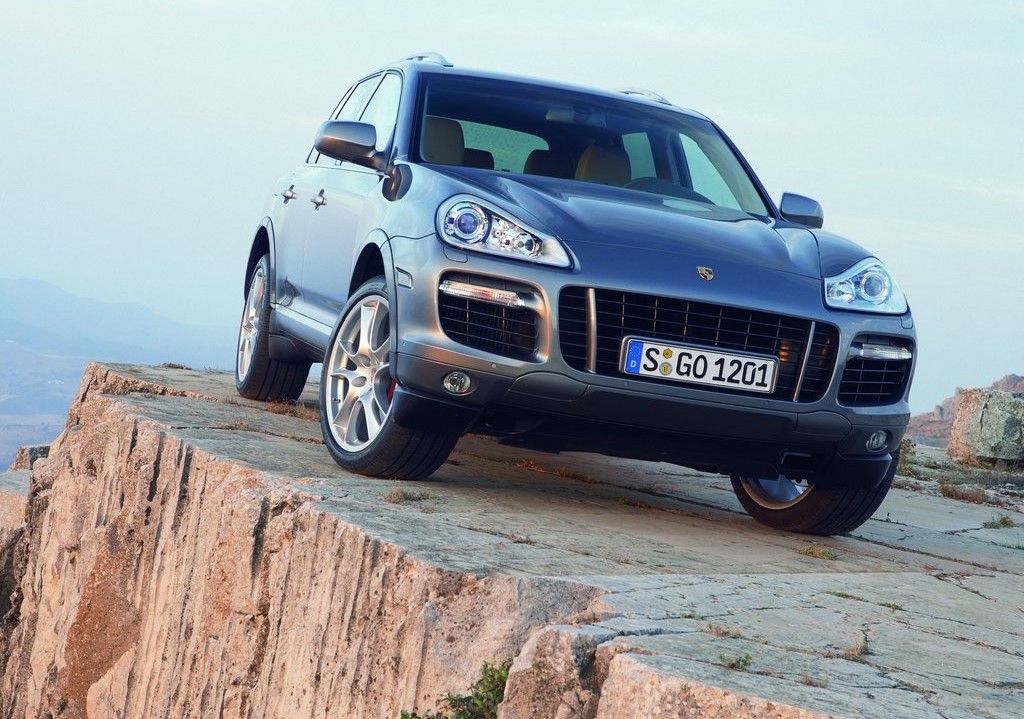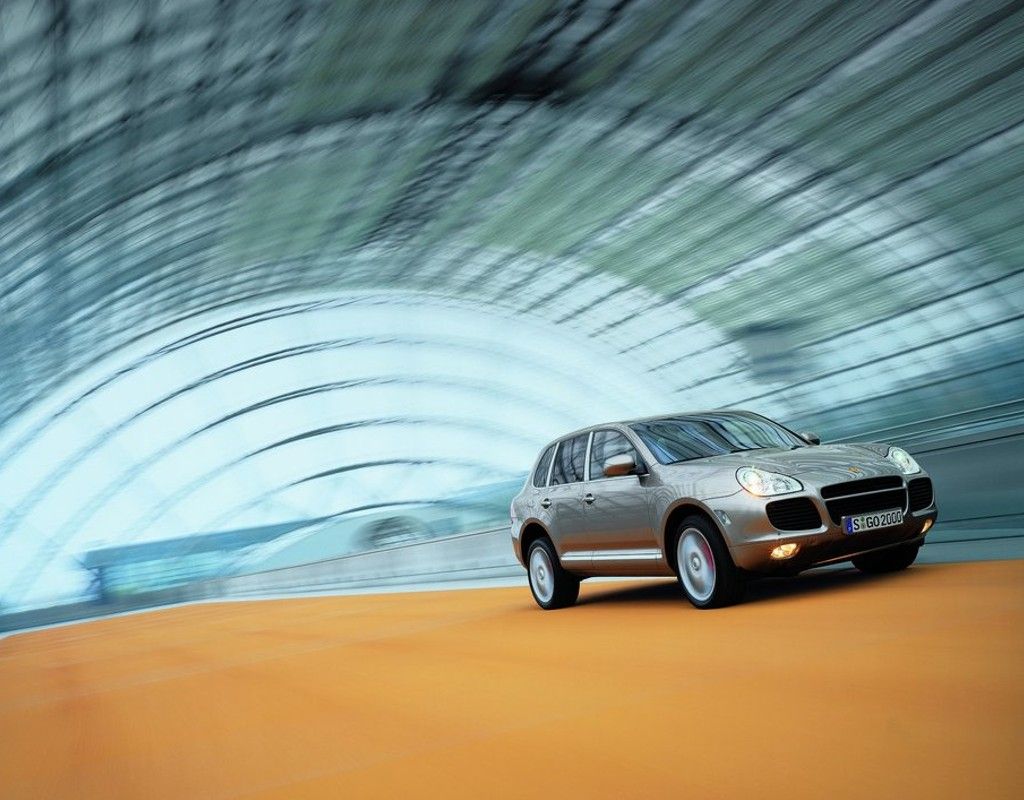The German car manufacturer, Porsche, is widely known for their luxury and performance vehicles. The company is owned by Volkswagen AG and in return, a large percent of their stocks belong to the larger Porsche Automobile Handling SE. Highlights of their recent roster include superb models like the 911, the Cayman, and the Boxster. However, Porsche has made tractors and airplane engines in the past as well.
Their SUV, the Porsche Cayenne, set a lot of firsts for the company. It acted as an off-road pioneer, being the first multi-terrain passenger car they produced. Porsche hadn't manufactured anything designed to leave the pavement since the 1950s, and that was their series of tractors. It was also the first four-door body style they released to the public.
The Cayenne possessed the first V8 engine since the discontinuation of the Porsche 928 in 1995. Production of the Cayenne began in 2002, and sales in the United States started the following year. Some manufacturing took place in Malaysia where the V6 base models got made, and some manufacturing was in Slovakia, where all the high-end models shipped from.
Originally, the Cayenne met the market with mixed reviews. The fresh concept appealed to some consumers, while others were on the fence. In time, it proved itself to be a capable SUV with a list of powerful options and luxury features. The first two models included the Cayenne S and the Cayenne Turbo, both stocked with a stout V8 engine under the hood. Later in the generation, Porsche added variations such as the diesel engine and the VR6.
Vehicle Specs Of The Porsche Cayenne
Given the relationship between Volkswagen and Porsche, it is not surprising that their vehicles share parts. The base models featured a 3.2-liter VW VR6 engine with a Porsche-specific intake manifold. The base models had an output of 247 hp. The 0-60 time was nine seconds, with a fraction of a second difference between the manual and automatic transmissions.
A 4.5-liter V8 powered the Cayenne S and the Turbo models. Without the turbo, the S models have a much higher output, capable of 340 hp and 310 lbs of torque. It can go 0-60 in 6.9 seconds, with a total top speed of about 150 mph. These V8s came standard with variable valve timing and a dry sump lubrication system. With the twin turbocharger, the V8s performance jumped to a staggering 514 hp and 530 lb-ft of torque. Porsche created the Turbo, then the Turbo S, to compete with the Mercedes-Benz AMG.
The first generation Cayenne models are five-door full-size SUVs. They are 4WD with a 38/62 torque split under normal circumstances and a continuous torque split with a multi-disc clutch. Both a six-speed manual transmission and a six-speed automatic transmission are available depending on the trim level.
What We Love About This Full-Size SUV
There is a lot to love about the Porsche Cayenne. It is a fun and sporty SUV, and the first generations have depreciated enough to be budget-friendly. As long as the car is in decent shape, it is a lot of power for the price. Overall, Cayennes are fun to drive. The manual transmissions make you feel connected to the powerful engine, and they perform well off the beaten path with the 4WD systems. The finely tuned suspension takes curves gracefully for a heavy vehicle.
The Cayenne S Titanium Edition is the highlight of the first generation and is exclusive to the 2006 models. It featured a lighter metal frame with an aluminum hood for weight reduction. It came stocked with 19-inch alloy wheels, titanium painted accents and chrome dual exhaust tips. The interior featured an MP3 player audio system with Bose speakers, computer navigation, and a two-tone color design. The Titanium trim had performance improvements like an upgraded sport tuned suspension and aerodynamic body kit. This made it the most luxurious and highest performing Cayenne model of its time.
The Bad And The Ugly About The Porsche Cayenne
The Cayenne acted as a guinea pig for Porsche. It was a first for the company in a lot of aspects, and it had some kinks that definitely needed working out. It isn't a terrible vehicle, but some design flaws made themselves evident after it was too late. A big problem for drivers is the plastic coolant lines placed above the engine. These pipes are liable to melt at high temperatures. They leak all over the engine bay and cause the parts below to malfunction, including the starter.
Other areas that Cayenne owners face issues with include the engine and powertrain. The center bearing in the driveshaft is prone to going out prematurely. This is a crucial component for the part and once it goes out, the rest of the driveshaft is scrap metal. Drivers have also complained about their car shutting off completely without warning. The steering wheels have a history of locking up or turning on their own. Issues like this are huge safety hazards. These issues are more common in the 2004 models. The 2004 models are considered the worst year of the vehicle for having the most problems with lower miles than other years.
Average Cost Of Owning A First-Gen Porsche Cayenne
Luxury cars are more expensive than regular ones. Repair bills for brands like Porsche and BMW are much higher than the ones coming from Ford and Toyota. It's just part of the deal. The Cayenne has an average maintenance cost of over $20,000 dollars over a ten-year period. That is $4,000 more than the average luxury SUV. The average cost of maintenance evens out to about $2,000 dollars a year over the life of the vehicle.
As expected, Porsches are also expensive to insure. The average owner spends around $2,500 a year on insurance in the U.S. Older models, like the first generation Cayenne, are often cheaper with the option of liability coverage.
Between insurance and maintenance, Porsche ownership can be a financial mistake. To make matters worse, the V8s are heavy gas drinkers. Some models have a fuel economy as low as 11 mpg. The initial purchase may be a good deal for an older luxury SUV, but the cost of ownership is sky-high.

-1.jpg)

.jpg)

